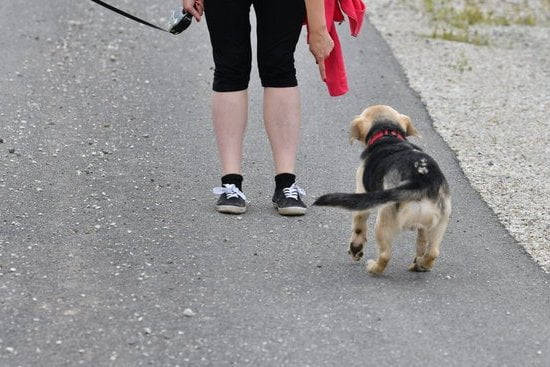Crate training a dog can be a valuable tool for both pet owners and their furry friends. It provides a safe and secure space for dogs, helps with potty training, reduces anxiety, and aids in preventing destructive behavior. But how long should a dog be crate trained each day? This article will explore the different aspects of crate training and provide guidance on the duration of training sessions.
Understanding the purpose of crate training is crucial to its effectiveness. Dogs are den animals by nature, and crates mimic a den-like environment that can make them feel secure. This section will delve into the reasons behind using a crate as part of a dog’s training routine.
In addition to understanding the benefits and purpose of crate training, pet owners must also follow a step-by-step guide to ensure proper and effective training for their dogs. Knowing when a dog is ready to be left out of the crate and avoiding common mistakes are essential elements in successful crate training. How long should crate training last each day? This section will provide valuable insights into this aspect of dog training.
Understanding the Purpose of Crate Training
Crate training is a valuable tool for both puppies and adult dogs. It provides them with a safe and secure space of their own, while also helping them to learn important behaviors such as bladder control and independence. Understanding the purpose of crate training is essential for successful implementation, and can help owners make the process as smooth as possible for their pets.
Bathroom Training
One of the main purposes of crate training is to aid in bathroom training for puppies. Dogs naturally avoid soiling their living spaces, so a properly sized crate can help teach them to hold their bladder until they are let outside. By confining them to a crate when they cannot be supervised, pet owners can prevent accidents and encourage proper bathroom habits.
Safety and Security
Another important purpose of crate training is providing dogs with a safe and secure space of their own. Dogs are den animals by nature, so having a cozy spot that they can retreat to can help reduce stress and anxiety. Crates also protect dogs from household hazards when unsupervised, such as chewing on electrical cords or getting into toxic substances.
Preventing Destructive Behavior
Crate training also helps prevent destructive behavior when left alone at home. Dogs that are not properly trained or accustomed to being left alone may engage in behaviors like chewing furniture or shoes, or getting into mischief around the house. Crating dogs during these times keeps them safe and prevents any unwanted mishaps.
It’s important for dog owners to understand that the purpose of crate training goes beyond simply confining their pet. When implemented properly, it can greatly benefit both the dog and its owner by fostering good habits and providing comfort and security for the pet.
Step-by-Step Guide to Crate Training a Dog
Crate training a dog can provide numerous benefits for both the pet and the owner. It can help with housebreaking, providing a safe space for the dog, preventing destructive behavior, and easing anxiety in new or stressful situations. The key to successful crate training is to understand the purpose behind it and to follow a step-by-step guide.
The first step in crate training is to introduce the dog to the crate in a positive way. This can be done by placing treats or toys inside the crate and letting the dog explore it at their own pace. It’s important not to force the dog into the crate or use it as a punishment, as this can create negative associations with the crate.
Once the dog is comfortable entering and exiting the crate voluntarily, it’s time to start lengthening the time they spend inside. Start by closing the door for short periods while you are still in sight, gradually increasing the duration as your dog becomes more relaxed. This process may take days or even weeks depending on your dog’s comfort level.
| Step | Description |
|---|---|
| 1 | Introduce crate with treats or toys |
| 2 | Start prolonging time spent in crate with door closed |
Signs That Your Dog Is Ready to Be Left Out of the Crate
When it comes to crate training a dog, one of the most important considerations is knowing when your furry friend is ready to be left out of the crate. Recognizing the signs that indicate your dog is prepared for this transition is crucial in ensuring their safety and well-being.
One key indicator that your dog is ready to be left out of the crate is their behavior when inside the crate. If they are consistently calm and relaxed, show a lack of destructive or anxious behavior, and do not whine or bark excessively when in the crate, this may indicate that they have become comfortable with being confined in a small space.
It’s also important to observe how they behave outside of the crate – if they can roam freely without causing any destruction or exhibiting anxiety-related behaviors, this is a positive sign that they may be ready for more freedom.
Another sign that your dog may be ready to be left out of the crate is their ability to hold their bladder and not have accidents inside the house. While accidents can happen occasionally, if your dog consistently asks to go outside to relieve themselves and can hold it while you are away, this demonstrates good potty training skills and responsible behavior.
Additionally, if your dog has shown increased independence and confidence, this can be an indication that they are ready for more freedom. Dogs who are no longer overly reliant on being near their owners at all times and can entertain themselves without getting into trouble are likely prepared for more time out of the crate. It’s important to remember that every dog is different, so it’s essential to assess these signs on an individual basis.
Common Mistakes to Avoid When Crate Training a Dog
Crate training is an essential part of raising a well-behaved and happy dog. It provides them with a sense of safety, security, and a space to call their own. However, one common question that many new dog owners have is, “how long should a dog be crate trained each day?” The answer to this question depends on the age and needs of your dog.
For puppies, crate training sessions should be shorter and more frequent compared to adult dogs. A general guideline for puppies is that they can be crated for the number of months they are old plus one. For example, if your puppy is three months old, they should ideally spend no more than four hours at a time in their crate during the day.
As your puppy gets older and becomes more accustomed to being in their crate, you can gradually increase the amount of time they spend in it. Adult dogs can typically be crated for up to 4-6 hours at a time during the day, but it’s important to ensure that they get regular breaks for exercise, potty breaks, and social interaction.
It’s crucial to remember that every dog is different, so it’s essential to observe your pet’s behavior and comfort levels when determining how long they should be crated each day.
| Age of Dog | Maximum Time in Crate (Per Day) |
|---|---|
| Puppy (3 months old) | 4 hours |
| Puppy (4 months old) | 5 hours |
| Adult Dog | 4-6 hours |
How Long Should a Dog Be Crate Trained Each Day?
Crate training is an important part of raising a well-behaved and comfortable dog. It provides a safe space for your dog to retreat to, helps with potty training, and prevents destructive behavior when you’re not around. But many new dog owners often wonder how long their dog should be crate trained each day.
The initial goal when crate training a puppy is to gradually increase the amount of time they spend in the crate. According to experts, a general guideline for how long a dog should be crate trained each day is as follows:
- Up to 3 months old: 30-60 minutes at a time
- 3 to 6 months old: 1-3 hours at a time
- 6 to 12 months old: 3-6 hours at a time
It’s important to note that these are just guidelines and every dog is different. Some dogs may need more frequent breaks, while others might feel comfortable for longer periods. Pay attention to your dog’s behavior and adjust accordingly.
Keep in mind that the crate should never be used as punishment, so it’s essential to gradually increase the time your dog spends in the crate and make it a positive experience for them. Over time, your dog will become more comfortable being alone in the crate for longer periods, and you’ll eventually be able to leave them out of the crate when you’re away from home.
Always monitor your pup’s progress and make adjustments as needed.
Tips for Easing Separation Anxiety During Crate Training
Separation anxiety is a common issue for many dogs, and crate training can exacerbate these feelings if not handled properly. Here are some tips for easing separation anxiety during crate training:
1. Gradual introduction: When starting crate training, introduce the crate to your dog slowly and gradually. Leave the door open and encourage them to explore the crate on their own terms. This will help them associate the crate with positive experiences rather than confinement.
2. Positive reinforcement: Use treats, praise, and rewards to create positive associations with the crate. Whenever your dog willingly goes into the crate or remains calm inside, reward them with their favorite treat or toy.
3. Avoid making a big deal out of leaving or returning: If your dog sees you getting anxious or emotional when leaving them in the crate, they may pick up on this energy and become more anxious themselves. Try to remain calm and composed when leaving or returning home.
4. Create a comforting environment: Make the crate a comfortable and inviting space for your dog by adding blankets, toys, and familiar scents inside. This will help them feel safe and secure while inside the crate.
5. Practice short absences: Start by leaving your dog in the crate for short periods of time while you are at home, gradually increasing the duration as they become more comfortable. This will help them understand that being in the crate does not always mean being left alone for long periods.
By following these tips, you can help ease separation anxiety during crate training and make the experience more positive for your dog.
Introducing Crate Training to Older Dogs
Crate training can be a useful tool for dogs of all ages, including older dogs. While it may take some time and patience to introduce crate training to an older dog, it is definitely possible. The key is to approach the process with understanding and compassion, recognizing that older dogs may have different needs and responses compared to younger pups.
When introducing crate training to an older dog, it’s important to take things slow. Start by gradually introducing the crate and making it a positive and comfortable space for your dog. Use treats, toys, and positive reinforcement to create a positive association with the crate. It’s also important to be patient and not rush the process – every dog is different, and some may take longer than others to adjust to crate training.
Additionally, when crate training an older dog, it’s crucial to consider their physical limitations. Make sure that the crate is appropriate for their size and that they are able to move comfortably within it.
Older dogs may also have specific health concerns or mobility issues that need to be taken into account during crate training. Consulting with a veterinarian can provide valuable insights on how best to incorporate crate training into an older dog’s routine while considering their individual needs.
In conclusion, while introducing crate training to an older dog may require extra time and care, it is definitely possible with patience and understanding. By approaching the process thoughtfully and addressing any unique considerations related to an older dog’s age or health, you can successfully implement crate training as a helpful tool for your furry companion.
Frequently Asked Questions
When Should You Stop Crate Training?
You should stop crate training your dog when they can be trusted to have free roam of the house without causing any destructive behavior or having accidents. This could take weeks to months depending on the individual dog.
How Do I Transition My Dog Out of the Crate?
To transition your dog out of the crate, start by leaving them alone for short periods in a puppy-proofed room. Gradually increase the time they spend outside the crate while monitoring their behavior for any signs of regression.
How Do You Know When Your Dog Is Fully Crate Trained?
You will know that your dog is fully crate trained when they willingly enter their crate on their own, remain calm and relaxed inside it, and do not exhibit any signs of anxiety or distress when left alone. It’s important to observe their behavior consistently to ensure that they are truly comfortable in their crate.

Welcome to the blog! I am a professional dog trainer and have been working with dogs for many years. In this blog, I will be discussing various topics related to dog training, including tips, tricks, and advice. I hope you find this information helpful and informative. Thanks for reading!





